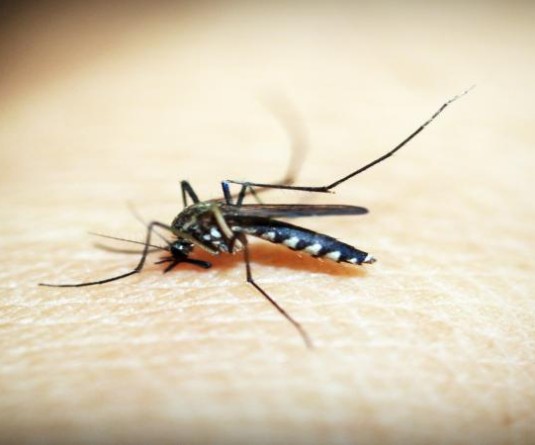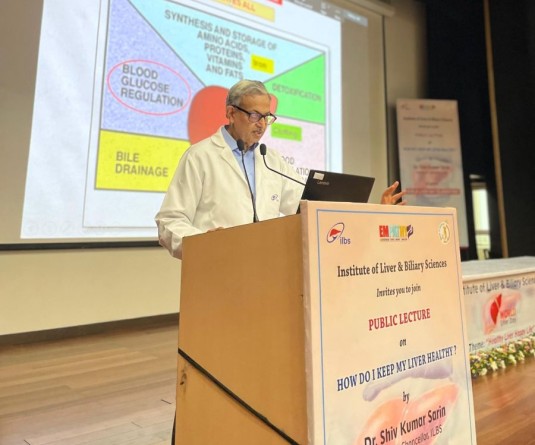
Bendangtemsula HICC (Hospital Infection Control Committee) Nurse, CIHSR
“Every year 5,000 patients in hospitals in Britain die from an infection acquired after they were admitted. Up to 100,000 more - almost one in 10 in-patients - endure extended illness, pain and suffering caused by bugs they contract in the place where they came for a cure. The number of deaths exceeds that from road accidents, and that from drugs and HIV/AIDS combined. Over the last ten years the dearth rates due to resistant hospital infections have more than doubled.
In the recent past several operating rooms even in British hospitals had to be closed as they could not be cleaned of those super bugs! Deadly germs have been cultured even from doctors’ neck ties and stethoscopes making it mandatory in the UK for male obstetricians to use only bow ties.
Simple hand washing repeatedly, even in between patients, could help a great deal but “big” bosses in India couldn’t care less. Poor nurses in Indian hospitals cannot force the medical staff to conform to the hygienic guidelines. The opportunities for resistance to develop” says a report from the UK
Well!!! “SUPER BUGS” and “DEATH???” YES…It is possible and it’s true that bugs causes deaths due to several reasons. Which may be Community acquired as well as Hospital acquired infection. Nosocomial Infection / Healthcare Associated Infections (HCAI)/Hospital Acquired Infection are defined as Infections Acquired during or as a result of hospitalization. Generally, a patient who develops an infection after 48 hours of hospital admission is considered to have Healthcare Associated Infections. However, some HCAI may not be manifested as disease immediately, and can manifest even after discharge.
LET ME SHARE THE HISTORY OF HAI’S Hippocrates made the relatively profound statement “Primum non nocere” that - If you wish to become a physician, always follow the maxim, first do no harm (Carrick 2000). It is obviously the case that modern medicine bears little resemblance to that practiced two millennia ago, but the maxims clearly still apply
Nearer to the present day, Florence Nightingale paraphrased Hippocrates’ words with the phrase “It may seem a strange principle to enunciate as the very first requirement in a hospital that it should do the sick no harm”. In the context of this dissertation her words were particularly poignant as she was referring to the infections that were rife in her hospital due to the sanitary arrangements
At almost exactly the same time that Nightingale was writing, on the other side of Europe, DrIgnaz Philipp Semmelweis(Father Hand Hygiene) was coming to the realization that it was hospital staff who were largely responsible for the dreadful death toll of puerperal fever in the maternity units that he was responsible for. His seminal observation was that puerperal fever claimed the lives of 25% of the mothers who delivered in hospital but only 5% of those who delivered at home.
By a complex series of exclusion experiments he was able to discover that by getting the hospital staff to wash their hands between seeing the patients he reduced the death rate by a staggering 96%. In a measure that echoes across the centuries, his insistence on all his colleagues washing their hands between patients made him very unpopular and subsequently marginalized by his clinical colleagues.
In India, however, hospitals often do not follow infection control practices, and this leads to the spread of disease. In response to the growing burden of HAIs in India, GARP (Global Antibiotic Resistance Partnership) is issuing several key recommendations that aim at reducing the prevalence of HAIs, including increased hand-washing, use of isolation rooms for infected patients, increased availability and uptake of diagnostic tests, reminders to limit catheter use, and use of gloves and gowns. The ministry of health and family welfare task force also recommends that all hospitals create an infection control plan, committee and team.
According to a study in 2011, the rate of deaths due to Hospital Acquired Infections (HAI), especially in Intensive Care Units (ICUs) in India was five times more than several developed and developing countries of the world.
What are some of the common Hospital Acquired Infections? Basically HAI are caused by cross transmission of microorganisms. The transmission can be through nose, urinary track and fluids. Ventilator based pneumonia, tuberculosis, blood stream induced infection and catheter based urinary tract infection are commonly observed in India. The HAI's commonly seen in India are: i) Ventilator Associated Pneumonia(VAP) - A lung disease caused by bacterial and virus infection due to mechanical breathing. Mainly affects patients in ICU and has a fatality rate of 20%. It is caused due to the use of infected ventilator tubes and prolonged mechanical breathing.
ii) Central Line Associated Blood Stream Infection (CLABSI) – It is caused by germs that enter the body through a central line, that is, through catheters, saline, etc that are used to exchange fluids, medicines and blood. It is one of the severe forms of HAI as per Centre for Disease Control.
iii) Surgical Site Infection (SSI) - Not particularly fatal but unhygienic surgeries lead to this HAI. Out of five, every two patient get infected by this infection. Causes redness, swelling and pain at the area of surgery. In severe cases it can lead to pus.
iv) Catheter AssociatedUrinary Tract Infection (CAUTI) - Common in ICU patients as they cannot even respond if they feel pain due to a tube that has been INSERT IGNOREed incorrectly. Most of the times lack of training causes UTI which is harder to treat. Urine blockage, internal leakage and tube infection can also be fatal if not paid attention to.
What are the common causes of HAI? The main reason for HAI is low hygiene especially at ICUs. Sometimes the ventilator tubes that have been used once is not disinfected or sterilized properly. Catheter tubes can also cause infections if INSERT IGNOREed by paramedics without using gloves. Basically patients are vulnerable to microbes and not following precautions can cause infections that can be fatal in nature.
What are precautionary measures that one needs to take? Training paramedics and doctors is most important. Due to a combination of lack of training and disregard to rules, ICU becomes a breeding ground of infections. Patient& Relatives should also remain alert whether the hospital staff is following proper protocol or not.
What must one do if someone they know succumbs to death or falls ill due to a HAI? Before accusing the hospital one must take an expert opinion. If they say hospital is responsible then file a case in Medical forum. HAI related deaths aren't taken serious yet, we have no surveys or Database on these deaths at all.
Weakened Immune System First of all, you entered a hospital probably because you were sick or injured. In either one of those cases, your immune system is going to be compromised by the injury or disease.
For example, when a virus does battle with your immune system, you can think of your immune system as an army trying to fight off this infective agent, the virus. If the army's resources are diverted to fighting off the virus, then another pathogen, like a bacterium, can sneak in behind the army and damage your body. You only have so many resources within your body to fight off so many pathogens. Eventually, something has to give and you may succumb to a secondary or opportunistic infection in the hospital due to a weakened immune system.
If, however, you aren't sick but have an injury like an open wound, then it's not hard to imagine how you may get another disease. Your skin is one of the most precious and important barriers from infection. If you have an open wound due to a burn or broken bone, then all sorts of microbes can just jump right in like into a swimming pool, swim all over your body, and cause you massive problems.
PREVENTION OF HOSPITAL ACQUIRED INFECTIONS
- Hands are the most common vehicle for transmission of organisms and “hand hygiene” is the single most effective means of preventing the horizontal transmission of infections among hospital patients and health care personnel.
- Follow standard precautions: Standard precautions include Gloves, Gown, Mask, Eye protection/face shield, Shoe and Head coverings
- Follow transmission-based precautions
- Airborne precautions: Disease-causing microorganisms may be suspended in the air as small particles, aerosols, or dust and remain infective over time and distance, for example, Mycobacterium tuberculosis
- Contact precautions Infections can be spread by usual direct or indirect contact with an infected person, the surfaces or patient care items in the room, for example, influenza virus infection, respiratory infection, varicella (chickenpox), herpes zoster, and hepatitis A and rotavirus infections.
- Droplet precautions Microorganisms are also transmitted by droplets generated during coughing, sneezing and talking, or a short-distance travelling
HAI in the 20th– 21stCentury The present era of healthcare- associated infections (HAI) started with the Center for Disease Control and Prevention (CDC) in the USA
It was observed that one-third of healthcare- associated infections were preventable through
Effective infection control and prevention of approximately 6% of HAIs offset the cost of an infection control program in a 250-bed hospital.
Many guidelines were produced by Healthcare Infection Control Practices Advisory Committee (HICPAC). In 1999, Institute of Medicine published a report “To err is human: Building a Safer Health System”. There were two important findings in this document, First over half of all adverse events in hospitals are due to medical errors and second the annual cost associated with these errors was estimated to be 17-20 billion US $ . In 2005, hospitals started contributing data to National Healthcare Safety Network.
Medical personnel are aware of the enormity of this issue but the burden of work; economic constraints and pressure from management have blunted their response. Unsuspecting patients, unaware of the cause of HAI, adopt a fatalistic approach to hospital infections that can, in fact, be prevented and controlled.





